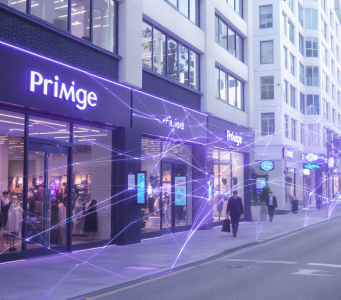Precision at Scale: How AI Removes Human Bias From Retail Pricing
Precision at Scale: How AI Removes Human Bias From Retail Pricing
Retail pricing has always been as much an art as it is a science. For decades, merchants, category managers, and pricing teams have relied on experience, instinct, and competitive knowledge to set prices that balance profit with customer appeal. These human inputs have driven success in traditional retail environments, but as data volume, complexity, and competition have exploded, human judgment alone is no longer enough.
In a world where prices can shift across thousands of SKUs and multiple channels every day, human-driven pricing often struggles to remain consistent and objective. Decisions made under time pressure can reflect personal preference, regional bias, or incomplete data. The result is inconsistency across stores, channels, and categories and ultimately, missed profit opportunities.
The next evolution of pricing is not about removing humans from the equation. It is about augmenting human expertise with explainable artificial intelligence that ensures consistency, objectivity, and fairness across the entire pricing process. This is where Hypersonix AI is redefining how retailers achieve precision at scale.
Before exploring how explainable AI transforms pricing discipline, it’s important to first understand the subtle ways in which human bias enters pricing decisions, and why even experienced teams can unintentionally erode profitability.

The Hidden Costs of Human Bias in Pricing
Every retailer aims for rational, customer-centric pricing. Yet, human decision-making is inherently influenced by bias. This bias does not always stem from intention; more often, it arises from intuition, time constraints, or overreliance on anecdotal data.
For instance, a category manager might lower prices on items they believe are underperforming without accounting for seasonality or regional variations in demand. Another might over-discount products they perceive as overstocked, not realizing the markdown is deeper than competitors’ or unnecessary for sell-through.
In omnichannel environments, the complexity multiplies. A regional manager may push for lower prices in a specific geography based on local competition, while online teams maintain higher pricing for the same SKU. These discrepancies confuse customers, weaken trust, and create margin gaps that accumulate over time.
Bias can also manifest in the interpretation of competitive data. Teams may overreact to a single competitor’s price drop or selectively focus on brands they perceive as direct rivals while ignoring substitutes that influence shopper behavior. Over time, these fragmented reactions produce inconsistent pricing architectures that neither reflect customer demand nor protect profit.

Traditional pricing tools rarely correct these issues. They automate workflows but still rely on human input to define rules, thresholds, and overrides. Without a consistent analytical foundation, bias persists and as product catalogs expand, it scales right alongside.
This is where AI-driven pricing brings a fundamental shift: decisions based not on personal judgment but on measurable data, guided by explainable logic that can be trusted and verified.
These challenges reveal that bias is not a matter of skill or intent, but a structural flaw in how pricing decisions are made. Correcting it requires a system that not only automates pricing but also explains it, creating transparency and discipline in every decision.
The Role of Explainable AI in Pricing Consistency
Artificial intelligence can process millions of data points faster and more objectively than human teams ever could. But what sets Hypersonix Pricing AI apart is not just computational power, it is transparency. The system does not make pricing decisions in a black box. Instead, it provides clear, explainable reasoning behind every recommendation, enabling retailers to understand and trust the intelligence that drives their strategy.
Explainable AI (XAI) ensures that every pricing action can be traced back to the data inputs and contextual factors that shaped it. For example, when Hypersonix recommends a price adjustment, it explains whether the driver was competitor movement, changes in elasticity, promotional overlap, or cost fluctuation. This transparency transforms AI from a mysterious algorithm into a collaborative decision partner.
By showing why each recommendation was made, explainable AI eliminates ambiguity and helps align cross-functional teams — from merchandising and finance to marketing and store operations. Pricing decisions become not only consistent but also defensible, which is increasingly critical in complex organizations where multiple stakeholders influence price strategy.
Explainability also addresses a major barrier to AI adoption: trust. Retail leaders are more likely to embrace AI systems that reveal their logic, allowing human oversight while reducing human bias. This balance of transparency and control creates a pricing ecosystem where intelligence and intuition coexist productively.
Transparency provides clarity, but true objectivity requires data. Once pricing teams can see how AI makes recommendations, the next step is to ensure those recommendations are grounded in accurate, demand-driven insights; beginning with elasticity.

Eliminating Bias Through Elasticity and Data Integrity
One of the most powerful ways Hypersonix removes bias is through elasticity modeling. Human teams may assume that price sensitivity is uniform across categories or rely on outdated notions of what customers will pay. In contrast, AI analyzes actual transaction data to identify how each SKU, category, or region responds to price changes.
This elasticity-based approach removes subjectivity from pricing. Instead of relying on opinions or historical guesswork, decisions are based on measurable demand patterns. If elasticity indicates that a certain product can sustain a higher price without losing volume, AI ensures the system recognizes and applies that opportunity consistently. Conversely, when customer sensitivity increases, prices can be adjusted proactively to protect volume without eroding profit unnecessarily.
Elasticity modeling also brings objectivity to promotions. Many pricing managers struggle to quantify the true impact of discounts, often assuming deeper discounts will always drive more sales. AI evaluates promotional lift, identifies diminishing returns, and recommends the optimal discount depth. By relying on data instead of perception, Hypersonix eliminates bias-driven over-discounting, one of the most common causes of margin erosion in retail.
This precision ensures fairness, too. Products are priced according to actual market response, not managerial preference or outdated benchmarks. Customers see consistent, competitive prices across regions and channels, and retailers maintain profitability across their entire assortment.
While elasticity helps remove internal bias by revealing how customers respond to price changes, retailers must also address external bias; the assumptions they make about competitors. This is where objective, data-backed competitor intelligence becomes essential.

Competitor Intelligence Without Subjectivity
Another area where bias often appears is in interpreting competitor actions. Retailers sometimes focus on specific competitors based on perceived rivalry rather than true market influence. Hypersonix’s Competitor AI corrects this through objective, data-driven analysis.
Competitor AI tracks competitors daily, across both online and offline channels and evaluates their pricing, assortment, and promotions. Using AI-powered product matching, it ensures that comparisons are made between true equivalents, even when SKUs differ. This eliminates the bias of selective benchmarking or incomplete visibility.
For instance, a retailer might assume their primary competitor is a well-known national chain, while local online sellers or private labels are quietly influencing customer decisions. Competitor AI identifies those hidden competitive threats, ensuring that no assumptions distort strategy.
By pairing competitive intelligence with elasticity data, Hypersonix enables pricing that reflects the real market, not the subjective perception of it. Retailers gain a balanced, factual understanding of where they stand, allowing them to price confidently and fairly across all markets.
Even with strong competitive and elasticity insights, bias can still creep in through channel-specific and regional decisions. Ensuring consistency across platforms and locations requires explainability that adapts to context, not just data.
Explainability in Multi-Channel and Regional Contexts
In multi-channel retail, ensuring consistent pricing across platforms is one of the hardest challenges. A price adjustment that makes sense for an online marketplace may not fit a physical store, where cost structures and customer demographics differ. Human teams often handle these differences through regional discretion, which can unintentionally introduce inconsistency or bias.
Hypersonix’s agentic workflows and explainable recommendations solve this by presenting the rationale for each price adjustment within the specific context of a channel or region. Pricing teams can see how elasticity, competition, and customer behavior differ between channels, enabling them to approve or adapt recommendations intelligently.
For example, if the AI recommends a lower price online due to higher elasticity but maintains a higher price in-store based on local purchasing patterns, it presents this logic clearly. Managers understand the rationale and can confidently approve the action without fear of hidden bias or arbitrary judgment.
This transparency not only ensures alignment between online and offline teams but also provides a clear audit trail for all pricing actions. Leaders can track how decisions were made and validate that pricing consistency and fairness were maintained across all regions and channels.
As AI brings clarity and structure, it is important to remember that humans remain at the center of pricing strategy. The next step is understanding how AI and human expertise can work together to create both precision and adaptability.

The Human Element: Guiding Intelligence with Expertise
AI removes bias, but human insight gives pricing its strategic direction. Hypersonix is designed not to replace human pricing managers but to amplify their decision-making power.
The platform’s human-in-the-loop structure ensures that every recommendation is reviewable, explainable, and adjustable. When a pricing manager overrides a recommendation, the system learns from the decision, refining its future suggestions. Over time, this collaboration between human expertise and machine learning produces a continuously improving pricing model that reflects both intelligence and intuition.
This balance also safeguards organizational culture. Pricing managers remain accountable, creative, and strategic but they operate within a framework that neutralizes personal bias and ensures data-backed consistency. The result is pricing that feels both intelligent and human centered.
When human judgment and AI intelligence operate in harmony, retailers unlock more than efficiency, they achieve trust. That trust, both within organizations and with customers, is what transforms precision into long-term competitive advantage.
Precision, Fairness, and Trust at Scale
Bias-free pricing is not just about operational efficiency; it’s about fairness, transparency, and trust. Customers notice when prices fluctuate inconsistently or differ across channels without reason. Over time, that inconsistency damages brand reputation.
By maintaining transparent, explainable logic behind every price point, Hypersonix ensures that customers see stable and logical pricing while retailers gain predictable profitability. The ability to justify every adjustment, internally and externally, strengthens confidence across the value chain.
At scale, this consistency becomes a competitive advantage. Retailers can expand into new markets or channels without fear of price misalignment. Executives gain the assurance that pricing decisions align with corporate strategy, while frontline teams execute with confidence, guided by clear, explainable intelligence.
As these elements come together, one truth becomes clear: bias-free pricing is not just about analytics or automation. It is about building a foundation of fairness, consistency, and explainability that redefines how retailers compete and grow.
Conclusion
As retail grows more complex, human bias in pricing has become one of the most overlooked risks to profitability and customer trust. Even the most experienced pricing teams can unintentionally allow subjective decisions to erode margins or distort market positioning.
Hypersonix AI provides a way forward. By combining elasticity modeling, competitive intelligence, explainable recommendations, and human-in-the-loop controls, it replaces inconsistency with precision and subjectivity with transparency.
The result is pricing that is consistent, data-driven, and fair — across every SKU, channel, and region. Retailers gain confidence that every price reflects strategy rather than bias, and every decision contributes to long-term profitability.
Precision at scale is not achieved by removing people from pricing decisions, but by empowering them with intelligence they can trust. With Hypersonix, retailers move beyond instinct and intuition to a future where every pricing action is clear, consistent, and confidently explainable.



.png)


